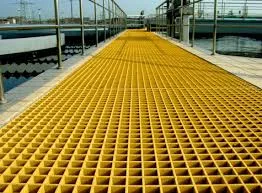
-
 Afrikaans
Afrikaans -
 Albanian
Albanian -
 Amharic
Amharic -
 Arabic
Arabic -
 Armenian
Armenian -
 Azerbaijani
Azerbaijani -
 Basque
Basque -
 Belarusian
Belarusian -
 Bengali
Bengali -
 Bosnian
Bosnian -
 Bulgarian
Bulgarian -
 Catalan
Catalan -
 Cebuano
Cebuano -
 China
China -
 China (Taiwan)
China (Taiwan) -
 Corsican
Corsican -
 Croatian
Croatian -
 Czech
Czech -
 Danish
Danish -
 Dutch
Dutch -
 English
English -
 Esperanto
Esperanto -
 Estonian
Estonian -
 Finnish
Finnish -
 French
French -
 Frisian
Frisian -
 Galician
Galician -
 Georgian
Georgian -
 German
German -
 Greek
Greek -
 Gujarati
Gujarati -
 Haitian Creole
Haitian Creole -
 hausa
hausa -
 hawaiian
hawaiian -
 Hebrew
Hebrew -
 Hindi
Hindi -
 Miao
Miao -
 Hungarian
Hungarian -
 Icelandic
Icelandic -
 igbo
igbo -
 Indonesian
Indonesian -
 irish
irish -
 Italian
Italian -
 Japanese
Japanese -
 Javanese
Javanese -
 Kannada
Kannada -
 kazakh
kazakh -
 Khmer
Khmer -
 Rwandese
Rwandese -
 Korean
Korean -
 Kurdish
Kurdish -
 Kyrgyz
Kyrgyz -
 Lao
Lao -
 Latin
Latin -
 Latvian
Latvian -
 Lithuanian
Lithuanian -
 Luxembourgish
Luxembourgish -
 Macedonian
Macedonian -
 Malgashi
Malgashi -
 Malay
Malay -
 Malayalam
Malayalam -
 Maltese
Maltese -
 Maori
Maori -
 Marathi
Marathi -
 Mongolian
Mongolian -
 Myanmar
Myanmar -
 Nepali
Nepali -
 Norwegian
Norwegian -
 Norwegian
Norwegian -
 Occitan
Occitan -
 Pashto
Pashto -
 Persian
Persian -
 Polish
Polish -
 Portuguese
Portuguese -
 Punjabi
Punjabi -
 Romanian
Romanian -
 Russian
Russian -
 Samoan
Samoan -
 Scottish Gaelic
Scottish Gaelic -
 Serbian
Serbian -
 Sesotho
Sesotho -
 Shona
Shona -
 Sindhi
Sindhi -
 Sinhala
Sinhala -
 Slovak
Slovak -
 Slovenian
Slovenian -
 Somali
Somali -
 Spanish
Spanish -
 Sundanese
Sundanese -
 Swahili
Swahili -
 Swedish
Swedish -
 Tagalog
Tagalog -
 Tajik
Tajik -
 Tamil
Tamil -
 Tatar
Tatar -
 Telugu
Telugu -
 Thai
Thai -
 Turkish
Turkish -
 Turkmen
Turkmen -
 Ukrainian
Ukrainian -
 Urdu
Urdu -
 Uighur
Uighur -
 Uzbek
Uzbek -
 Vietnamese
Vietnamese -
 Welsh
Welsh -
 Bantu
Bantu -
 Yiddish
Yiddish -
 Yoruba
Yoruba -
 Zulu
Zulu
FRP Materials for Thermal and Nuclear Energy Applications in Power Generation
FRP Products for Thermal and Nuclear Power Revolutionizing Energy Generation
The demand for energy continues to rise globally, and industries are looking for innovative materials to enhance efficiency, safety, and sustainability in power generation. Fiber-Reinforced Plastic (FRP) products are emerging as significant solutions in both thermal and nuclear power sectors. Their unique properties make them ideal for various applications, leading to improved operation and maintenance processes.
What are FRP Products?
FRP is a composite material consisting of a polymer matrix reinforced with fibers, which can be glass, carbon, or aramid. The combination of these materials grants FRP products a remarkable set of features, including high strength-to-weight ratio, corrosion resistance, low thermal conductivity, and excellent fatigue resistance. These characteristics make FRP suitable for environments that experience extreme conditions, such as high temperatures, significant radiation, and corrosive environments, as commonly found in thermal and nuclear power plants.
Applications in Thermal Power
In thermal power plants, where steam and extensive heat are involved, FRP products serve various vital applications
1. Insulation High-performance FRP insulation materials greatly reduce heat loss in pipes and equipment, enhancing overall energy efficiency. Their lightweight nature minimizes the additional load on structural components.
2. Cooling Towers FRP is an excellent choice for the construction of cooling towers due to its resistance to corrosion and UV radiation. It ensures long-term durability while reducing maintenance costs, as traditional materials like wood or metal may deteriorate over time.
3. Piping Systems The use of FRP piping systems prevents leaks and subsequent environmental contamination. Their chemical resistance is ideal for transporting corrosive fluids, making them perfect for handling cooling water, steam condensate, and other fluids in power plants.
4. Structural Components FRP can be used for beams, columns, and support structures, providing strength without adding excessive weight. This is particularly beneficial in seismic-prone areas where traditional materials might fail during earthquakes.
Applications in Nuclear Power
frp products for thermal and nuclear power

In the nuclear power sector, safety and reliability are paramount. FRP products are increasingly being adopted due to their unique capabilities
1. Radiation Shielding FRPs can be engineered to provide a degree of shielding against radiation, making them useful for applications within reactor buildings and storage facilities for radioactive materials.
2. Containment Structures The properties of FRP allow for the construction of robust containment structures that are critical for preventing leaks of radioactive materials into the environment. Their durability and resistance to harsh conditions contribute to plant safety.
3. Instrumentation and Control Systems FRP's low thermal conductivity aids in protecting sensitive instrumentation from temperature fluctuations, ensuring accurate readings and reliable operation of control systems.
4. Maintenance Solutions In nuclear facilities, where downtime can be costly, using FRP for repairs and upgrades allows for quicker and more efficient interventions without compromising safety. FRP repair wraps can restore the integrity of pipes and other components without extensive shutdowns.
Benefits of FRP Products
The advantages of using FRP products extend beyond their physical properties. Their lightweight nature simplifies handling, reduces transportation costs, and minimizes installation times. Additionally, their adaptability allows for custom designs to meet specific engineering requirements in various power generation settings.
Moreover, FRP materials demonstrate an environmentally friendly advantage since their extended lifespan means fewer materials are needed over time, contributing to reduced waste. Additionally, the lower energy requirements for producing FRP compared to traditional materials can lead to lower carbon emissions during manufacturing.
Conclusion
As energy demands grow and the push for sustainability becomes more pressing, FRP products represent a cutting-edge solution for the thermal and nuclear power industries. Their unique benefits enhance operational efficiency, improve safety, and reduce maintenance costs, making them invaluable in meeting the challenges of modern energy generation. By embracing the potential of FRP, power facilities can strategically position themselves for the future, ensuring a safer and more efficient energy landscape.









